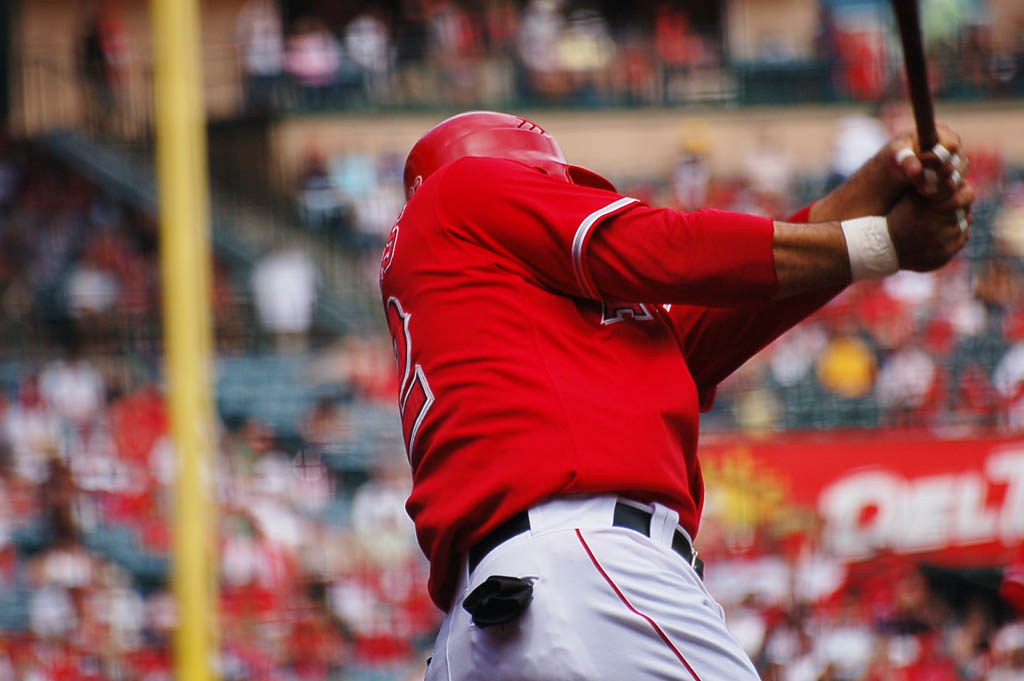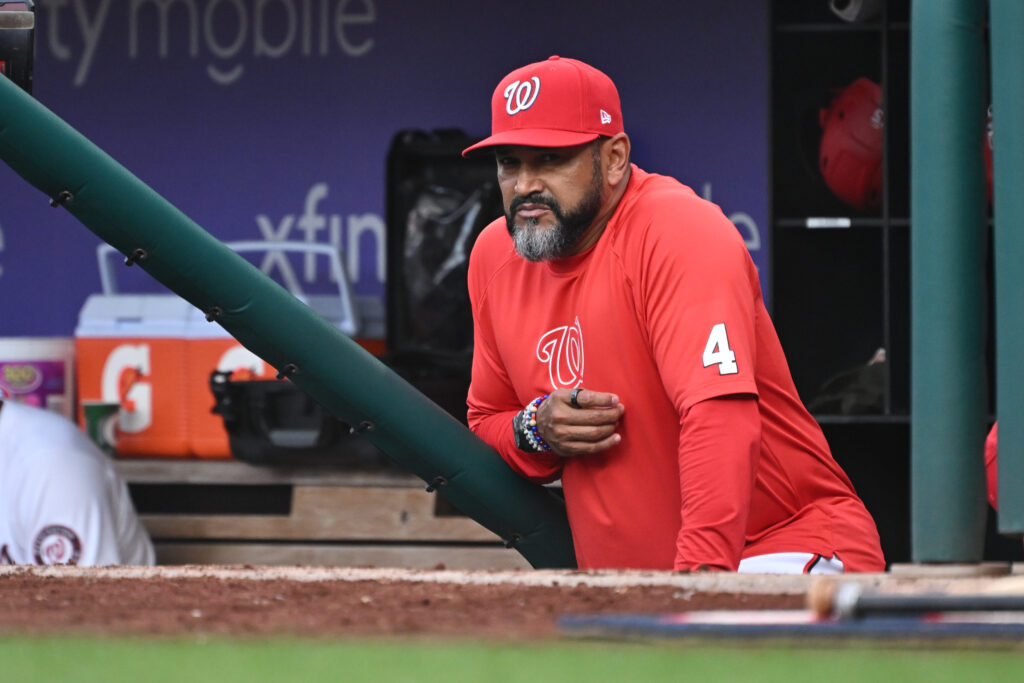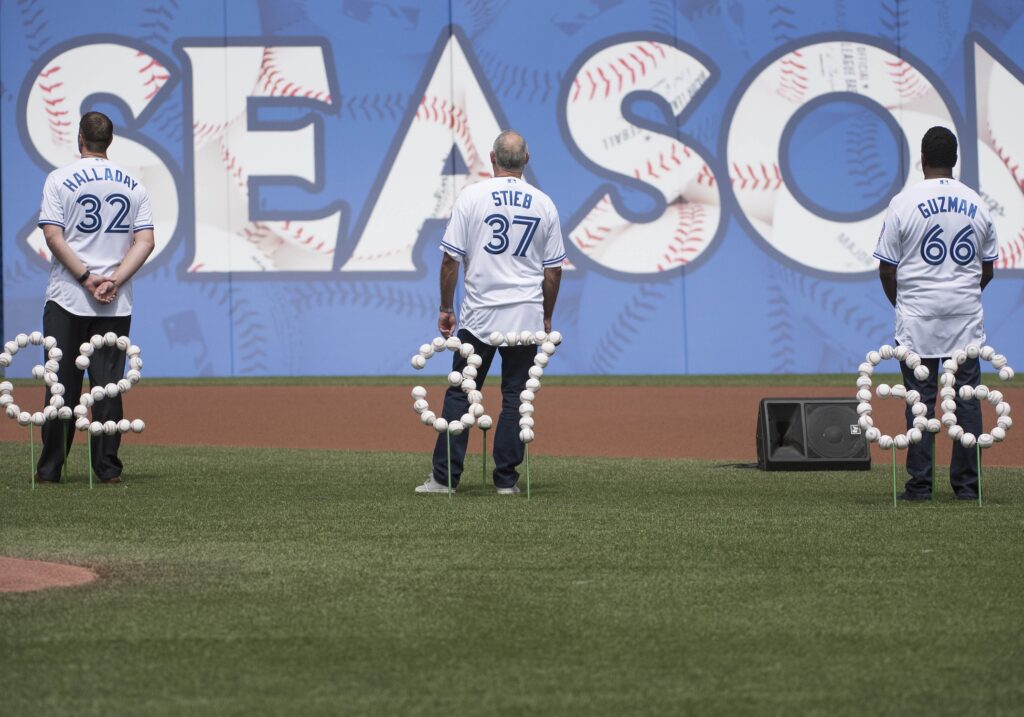This is the third article in a series that looks at the five best players at each position for the Los Angeles Angels. In this installment are second basemen and shortstops.
There are no Hall of Famers or superstars among the best middle infielders in Los Angeles Angels history. However, the list includes several defensive stars and top players from the team’s playoff years in the early 1980s and the early 2000s.
The Best Second Basemen and Shortstops in Los Angeles Angels History
Second Basemen
Honorable Mentions – Billy Moran started 47 games in the franchise’s expansion season. He was an All-Star in both games the following year, posting career highs with a .282 average, 90 runs, 186 hits, 17 home runs and 74 runs batted in. Moran batted. 275 with 200 runs, 448 hits, 26 homers and 172 RBIs in 417 games over four seasons (1961-64).
Johnny Ray arrived the year after the team’s run to the ALCS in 1986. He played four seasons (1987-90) and earned his lone All-Star selection in 1988, when he batted .305 and set career highs with 184 hits, 42 doubles and 83 runs batted in. Ray is tied for fourth in franchise history with a .296 average and has 190 runs, 493 hits, 16 home runs and 203 RBIs in 422 games.
5. Sandy Alomar Sr. – A father to a pair of stars during the 1990s, Sandy Sr. spent six of his 15 seasons with the Angels (1969-74). Alomar was an All-Star in 1970, when he set a career high with 82 runs, stole 35 bases and led the league in double plays turned by a second baseman. The following year, he batted .260 and set career highs with 179 hits, 42 runs batted in and 39 steals. Alomar totaled 341 runs, 758 hits, eight home runs, 162 RBIs and 139 stolen bases in 795 games.
4. Howie Kendrick – He played nine seasons with the Angels (2006-14) with the final six as the full-time starter. Kendrick earned his only All-Star selection in 2011, when he posted a .285-18-63 stat line, but he had his best offensive season three years later. In 2014, he hit .293 with 85 runs and career highs with 181 hits and 75 runs batted in.
Kendrick ranks sixth in franchise history in doubles (249), eighth in average (.292) and hits (1,204), tied for ninth in triples (30) and tenth in total bases (1,747). He also has 534 runs, 78 home runs, 501 RBIs and 95 stolen bases in 1,081 games. Kendrick appeared in 16 playoff games with the Angels, totaling five runs, 11 hits, one home run, two RBIs and three steals. He won a title with the Nationals in 2019 and was the MVP of the NLCS that year.
3. Adam Kennedy – When you mention players with postseason hardware for the Angels, you can’t leave out Kennedy, who spent seven seasons with the franchise (2000-06). The 1999 MLB Futures Game participant came to from the Cardinals in the trade for Jim Edmonds and proceeded to have his best season, batting .266 and setting career highs with 82 runs, 159 hits, 33 doubles, 11 triples, 72 runs batted in and 22 stolen bases in 2000. He also led all American League second basemen in putouts and fielding percentage.
In his Anaheim career, Kennedy is tied for sixth in franchise history with 32 triples and tied for ninth with 123 steals. He batted .280 with 435 runs, 935 hits, 176 doubles, 51 home runs and 353 RBIs in 992 games. Kennedy appeared in 25 postseason games, posting 13 runs, 24 hits, four home runs and 13 runs batted in. He was named the MVP of the 2002 ALCS after batting .357 and amassing five runs, five hits, three homers and five RBIs in Anaheim’s sweep of Minnesota. Kennedy played for five teams over his final six seasons and retired after spending 2012 with the Dodgers.
2. Bobby Knoop – The slick fielder won three gold gloves in six seasons at the keystone position with the Angels (1964-69). Knoop earned his only All-Star selection in 1966 when he led the league with 11 triples and set career highs with 54 runs, 137 hits, 17 home runs and 72 runs batted in.
Knoop had 247 runs, 629 hits, 44 homers and 236 RBIs in 803 games with California. He led the league in double plays turned by a second baseman four times and putouts and assists twice each. Knoop was sent to the White Sox in the 1969 trade that brought Sandy Alomar Sr. to the Angels. Knoop retired in 2019 after a 53-year career in baseball.
1. Bobby Grich – After three All-Star selections, four gold gloves and a title in seven years with Baltimore, he moved across the country and signed with California before the 1977 season, becoming one of the first major players to change teams after baseball instituted free agency. However, he missed two-thirds of the season after getting injured lifting an air conditioner, an injury which eventually required surgery on a herniated disc in his back.
He failed to rebound in 1978 but had his best offensive numbers the following year, hitting .294 and setting career highs with 157 hits, 30 home runs and 101 runs batted in while leading the Angels to their first playoff appearance. After a second All-Star selection, Grich led the American League with 22 home runs to go with 61 RBIs and a .304 average in the strike-shortened 1981 season, leading to his only silver slugger.
The three-time All-Star and 1985 fielding champion batted .269 with 601 runs, 1,103 hits, 183 doubles, 154 homers and 557 RBIs in 1,222 games. He scored two runs, 10 hits, one home run and six RBIs in 15 playoff games with California. However, he hit a soft line drive back to the pitcher in the bottom of the ninth in Game 5 of the 1986 ALCS that left the bases loaded and the game tied. The Red Sox had scored four runs in the eighth inning and, while the Angels tied the score in the ninth, they fell in the 11th and then lost the next two games.
Grich ended his 17-year playing career in 1986 and he has had a variety of jobs since then. He sold commercial real estate, worked as a baseball executive for an independent team in the Western Baseball League, worked in the sales and marketing department for the Angels and played lots of golf. Grich became the first member of the Angels Hall of Fame in 1988.
Shortstops
Honorable Mentions – Rick Burleson earned three All-Star selections and a gold glove in seven seasons with Boston, and California had no reason to expect different when they traded him for Carney Lansford in late 1980. Burleson was an All-Star and silver slugger in the 1981 strike-shortened season, but things went downhill from there. He played just 44 games over the next two seasons after undergoing rotator cuff surgery and appeared in only seven games in 1984 when doctors found another tear in his shoulder.
Burleson missed all of the 1985 season when he slipped while lifting weights and dislocated his shoulder. He returned the following year and won the UPI Comeback Player of the Year while splitting time between second base and designated hitter. What started as such with such promise for Burleson and the Angels ended with him playing just 253 games in five seasons (1981-84 and 86), batting .281 and totaling 244 hits, 10 home runs and 75 runs batted in. He played one final season with the Orioles before retiring in 1987.
David Eckstein was a good contact hitter who averaged better than a hit per game in four seasons with the Angels (2001-04). His best offensive year was 2002, when he batted .293 with 178 hits and 21 stolen bases and set career highs with 107 runs, eight home runs and 63 runs batted in. Eckstein batted .278 with 340 runs, 614 hits, 17 homers, 170 RBIs and 82 steals in 567 games. He led the league in hit by pitches and sacrifices twice each and won a fielding title in 2004.
Eckstein had 11 runs, 24 hits and six RBIs in 19 playoff games. After his time in Anaheim, he went to St. Louis and won a second title with the Cardinals in 2006 while being named World Series MVP in the six-game victory over the Tigers. Eckstein also spent times with the Blue Jays, Diamondbacks and Padres before retiring in 2010.
Orlando Cabrera took over for Eckstein, coming to the Angels after winning a title with the Red Sox in 2004. He spent three seasons in Anaheim (2005-07), batting .281 and totaling 266 runs, 502 hits, 108 doubles, 25 home runs and 215 RBIs in 449 games. Cabrera had 45 doubles in 2006 and batted a career-high .301 with 101 runs, 192 hits, 86 RBIs and 20 steals the following year. He had four runs, 12 hits, a homer and seven RBIs in 13 playoff games. Cabrera played for nine teams in his 15-year career, ending his playing time after splitting 2011 with the Indians and Giants.
5. Dick Schofield – He is the son of a former infielder who spent 19 seasons in the major leagues. Schofield didn’t have quite as long of a career, but he played 14 seasons, 12 with the Angels (1983-92 and 95-96). His best season was 1986, when he set career highs with 67 runs, 13 home runs, 57 runs batted in and 23 stolen bases.
Schofield had 404 runs, 798 hits, 104 doubles, 48 home runs, 280 RBIs and 99 steals in 1,086 games (tied for tenth in franchise history). In the 1986 playoffs, he hit .300 (9-for-30) with four runs scored, one home run and two RBIs. Schofield won three fielding titles and led all American League shortstops in assists in 1988. After three years away, he returned to California in 1995 and played two seasons before retiring.
4. Gary DiSarcina – Like Schofield, he spent 12 seasons with the Angels, although in his case, that was his entire career. DiSarcina earned his only All-Star selection in 1995 when he batted .307. However, he tore a ligament in his thumb on a slide in early August and he was on the bench as California blew an 11-game lead in the A.L. West.
DiSarcina also lost half the 1999 season when he broke his arm after being hit by a fungo bat swing during batting practice. He played just 12 games the following year before his career ended from complications after rotator cuff surgery. DiSarcina matched Schofield with 1,086 games, and his overall statistics were better: 444 runs, 966 hits, 186 doubles, 28 home runs and 355 runs batted in.
3. Andrelton Simmons – He is one of the best fielders at the position in the past decade, winning two gold gloves with the Braves and two more in five seasons with the Angels (2016-20). Simmons also won three Wilson Defensive Player Awards and led the league in putouts and double plays in 2018,
“Simba” had his best offensive season in 2017, when he batted .278 with 69 RBIs and career-high totals of 77 runs, 164 hits, 38 doubles, 14 home runs and 19 stolen bases. Overall, he batted .281 with 259 runs, 592 hits, 112 doubles, 37 homers and 238 RBIs in 561 games. After one season with the Twins and another with the Cubs, Simmons has remained unsigned despite appearing with the Netherlands in the 2023 World Baseball Classic.
2. Erick Aybar – He played the first 10 seasons with the Angels (2006-15), winning a gold glove in 2011. Aybar earned his only All-Star selection in 2014, when he batted .278 and set career highs with 77 runs, 164 hits and 68 runs batted in.
“The Admiral” ranks fourth in franchise history in triples (43), sixth in stolen bases (141), seventh in hits (1,223) and doubles (222), eighth in games (1,220) and ninth in runs (572). He batted .276 with 48 home runs and 417 RBIs. Aybar had four runs, 16 hits, four RBIs and four steals in 17 playoff games. He split 2016 between the Braves and Tigers and ended his career with the Padres the following year.
1. Jim Fregosi – He was selected by Los Angeles in the expansion draft from the Boston organization and became a star and a fan favorite during his 11 seasons with the franchise (1961-71). Fregosi was selected to six All-Star teams, won a gold glove in 1967, led American League shortstops in double plays twice along with putouts and assists once each.
On offense, Fregosi had his best season in 1970, when he had a .278 average and 167 hits and set career highs with 95 runs, 33 doubles, 22 home runs and 82 RBIs. He also had 12 triples in 1963 (fifth in team history) and 13 in 1968 (tied for second), and he hit for the cycle twice with California. Fregosi is the all-time franchise leader with 70 triples, and he batted .268 with 115 home runs and 71 steals in his Angels career. He also ranks fifth in games (1,429), sixth in runs (691), hits (1,408) and total bases (2,112), eighth in doubles (219) and tenth in RBIs (546).
Fregosi is perhaps best known as being the player the Mets received in the trade that brought Nolan Ryan (and three other young players) to the Angels, a move which was made after a tumor was discovered in Fregosi’s foot. While Ryan went on to throw seven no-hitters and become one of the most dominant pitchers in baseball history, Fregosi spent just 1½ seasons in New York before he went to Texas. He had a few decent seasons with the Rangers and finished his playing career with the Pirates in 1978.
Later that season, Fregosi returned to California as a manager and led the team to its first playoff appearance the following year. He also led the White Sox, Phillies and Blue Jays, amassing a 1,028-1,094 record in 15 seasons and leading Philadelphia to the National League pennant in 1993.
Upcoming Stories
Los Angeles Angels Catchers and Managers
Los Angeles Angels First and Third Basemen and Designated Hitters
Los Angeles Angels Second Basemen and Shortstops
Los Angeles Angels Outfielders – coming soon
Los Angeles Angels Pitchers – coming soon
Previous Series
A look back at the Kansas City Royals
Kansas City Royals Catchers and Managers
Kansas City Royals First and Third Basemen and Designated Hitters
Kansas City Royals Second Basemen and Shortstops
Kansas City Royals Outfielders
Kansas City Royals Pitchers
A look back at the Houston Astros
Houston Astros Catchers and Managers
Houston Astros First and Third Basemen and Designated Hitters
Houston Astros Second Basemen and Shortstops
Houston Astros Outfielders
Houston Astros Pitchers
A look back at the Detroit Tigers
Detroit Tigers Catchers and Managers
Detroit Tigers First and Third Basemen and Designated Hitters
Detroit Tigers Second Basemen and Shortstops
Detroit Tigers Outfielders
Detroit Tigers Pitchers
A look back at the Colorado Rockies
Colorado Rockies Catchers and Managers
Colorado Rockies First and Third Basemen
Colorado Rockies Second Basemen and Shortstops
Colorado Rockies Outfielders
Colorado Rockies Pitchers
A look back at the Cleveland Guardians
Cleveland Guardians Catchers and Managers
Cleveland Guardians First and Third Basemen and Designated Hitters
Cleveland Guardians Second Basemen and Shortstops
Cleveland Guardians Outfielders
Cleveland Guardians Pitchers
A look back at the Cincinnati Reds
Cincinnati Reds Catchers and Managers
Cincinnati Reds First and Third Basemen
Cincinnati Reds Second Basemen and Shortstops
Cincinnati Reds Outfielders
Cincinnati Reds Pitchers
A look back at the Chicago White Sox
Chicago White Sox Catchers and Managers
Chicago White Sox First and Third Basemen and Designated Hitters
Chicago White Sox Second Basemen and Shortstops
Chicago White Sox Outfielders
Chicago White Sox Pitchers
A look back at the Chicago Cubs
Chicago Cubs Catchers and Managers
Chicago Cubs First and Third Basemen
Chicago Cubs Second Basemen and Shortstops
Chicago Cubs Outfielders
Chicago Cubs Pitchers
A look back at the Boston Red Sox
Boston Red Sox Catchers and Managers
Boston Red Sox First and Third Basemen
Boston Red Sox Second Basemen and Shortstops
Boston Red Sox Outfielders and Designated Hitters
Boston Red Sox Pitchers
A look back at the Baltimore Orioles
Baltimore Orioles Catchers and Managers
Baltimore Orioles First and Third Basemen
Baltimore Orioles Second Basemen and Shortstops
Baltimore Orioles Outfielders and Designated Hitters
Baltimore Orioles Pitchers
A look back at the Atlanta Braves
Atlanta Braves Catchers and Managers
Atlanta Braves First and Third Basemen
Atlanta Braves Second Basemen and Shortstops
Atlanta Braves Outfielders
Atlanta Braves Pitchers
A look back at the Arizona Diamondbacks
Arizona Diamondbacks Catchers and Managers
Arizona Diamondbacks First and Third Basemen
Arizona Diamondbacks Second Basemen and Shortstops
Arizona Diamondbacks Outfielders
Arizona Diamondbacks Pitchers



